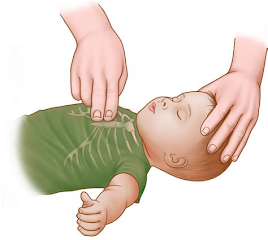CPR First Aid Guide
Cardiopulmonary Resuscitation (CPR) is a life-saving technique used in emergencies when someone’s breathing or heartbeat has stopped. CPR can be crucial in situations such as a heart attack, drowning, or cardiac arrest. This guide provides a brief overview of CPR First Aid procedures.
FOR ADULTS
When to Perform CPR:
- The person is unresponsive and not breathing, or only gasping.
- The person is unconscious and not showing signs of life.
Steps for Performing CPR:
Ensure Safety:
- Make sure the environment is safe for both you and the victim.
- Check for responsiveness by tapping the person and shouting, “Are you okay?”
Call for Help:
- If the person is unresponsive, immediately call emergency services (e.g., 911 or your local emergency number).
If possible, ask someone nearby to get an Automated External Defibrillator (AED).
Open the Airway:
- Place one hand on the person’s forehead and gently tilt the head back.
- Lift the chin with the other hand to open the airway.
Check for Breathing:
- Look, listen, and feel for breathing for no more than 10 seconds.
- If the person is not breathing or only gasping, proceed with chest compressions.
Begin Chest Compressions:
- Place the heel of one hand on the center of the chest, and place your other hand on top.
- Interlock your fingers and keep your arms straight.
- Push hard and fast at a rate of 100-120 compressions per minute. Compress the chest at least 2 inches deep for adults.
- Allow the chest to fully recoil between compressions.
Give Rescue Breaths (if trained):
- After 30 compressions, give 2 rescue breaths.
- Pinch the nose shut, cover the person’s mouth with yours, and blow to make the chest rise.
- If you’re not trained or uncomfortable giving breaths, continue with compressions only.
Use an AED (if available):
- Turn on the AED and follow the voice prompts.
- Attach the pads as indicated by the AED and ensure no one touches the person during analysis.
- If a shock is advised, ensure everyone is clear and press the shock button.
Continue CPR:
- Perform cycles of 30 compressions and 2 breaths until professional help arrives or the person starts breathing.
Special Considerations:
- Children: Use one hand for chest compressions if the child is small. For infants, use two fingers for compressions.
- Drowning Victims: Give rescue breaths first before starting compressions.
- Pregnant Women: Perform chest compressions higher on the sternum, and if trained, consider left lateral tilt to relieve pressure.
After CPR:
- Monitor the person’s condition until emergency services take over.
- If the person regains consciousness, place them in the recovery position (lying on their side).
Conclusion:
CPR is a critical skill that can save lives in emergencies. Regularly updating your CPR knowledge and getting certified through a first aid course can help you respond effectively in an emergency.







0 Response to "CPR First Aid"
Post a Comment